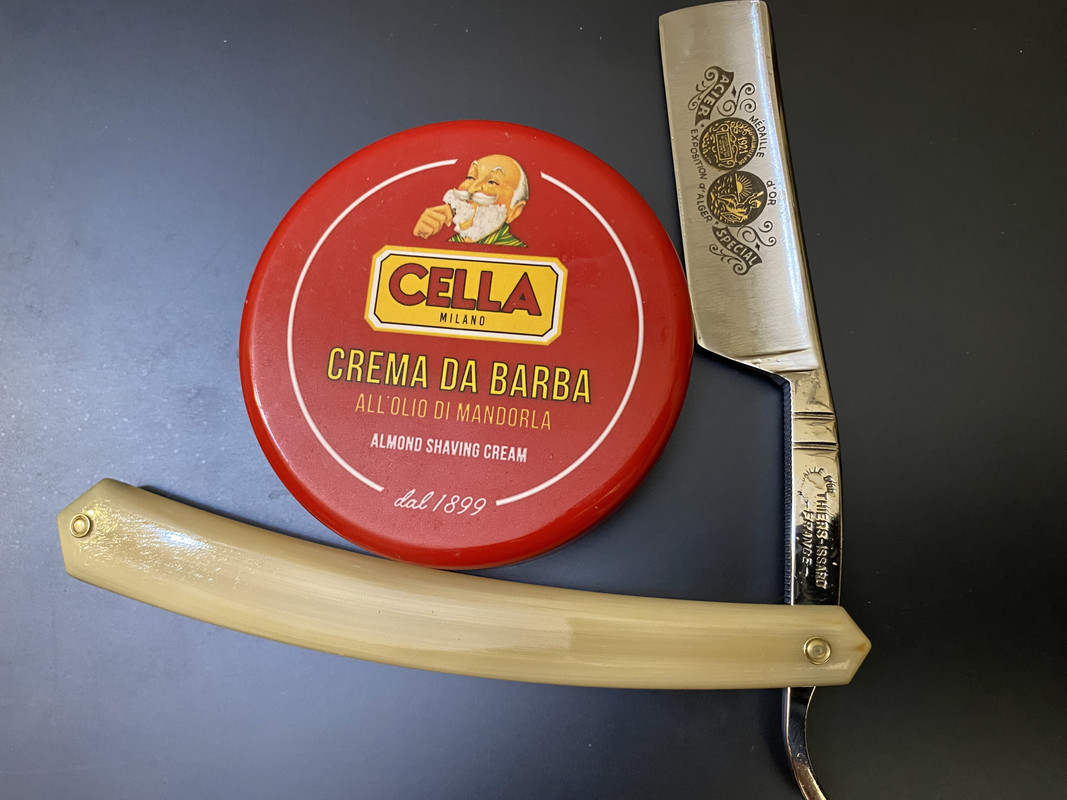Results 21 to 28 of 28
Thread: Better steel?
-
01-14-2024, 07:35 AM #21Senior Member

- Join Date
- Jul 2023
- Posts
- 140
Thanked: 0
-
01-14-2024, 10:50 AM #22
-
03-08-2025, 10:23 AM #23Member

- Join Date
- Aug 2023
- Location
- Kuala Lumpur Malaysia
- Posts
- 48
Thanked: 0
Old thread but here's my 2 cents: steel quality has vastly improved since the 1960s and more so in recent years. Look at knife steels. Who would have thought S110V, Maxament, Magnacut, and other steels would exist even fifteen years ago. Firearm steel has greatly improved and that is why older guns often cannot fire modern ammunition and why they change a cartridge ever so slightly so it won't chamber in an older gun. The steel is inferior. Now we have cartridges that have 80k psi and the steel has to stand up to that.
Razor steel has improved just by osmosis or by trickle down. Thiers Issard uses a steel that they run to 65hrc or better. That level of hardness was not normally to be found 50 years ago and if it were, the razor would be brittle. Sure, there were some, but modern steels have improved, even good old standby basic steels have been improved.
-
03-08-2025, 10:25 AM #24Member

- Join Date
- Aug 2023
- Location
- Kuala Lumpur Malaysia
- Posts
- 48
Thanked: 0
-
03-08-2025, 03:52 PM #25

Start running meets in your area. The biggest part of teaching honing is teaching people to set bevels so you'll do a lot of it. My favorite way was to stop honing just short of the bevel being fully set and then have the student identify, using the fingernail test, which parts were fully set and which areas needed more work.
-
03-08-2025, 04:36 PM #26
-
03-08-2025, 04:55 PM #27
-
03-09-2025, 02:55 PM #28

There is a lot of truth in that observation. So much that I picked up some MagnaCut and some AEB-L a few weeks ago. AEB-L is known to form particularly fine grained blades, and it was actually formulated specifically for razors and razor blades. MagnaCut is all the rage but I don't believe it is just hype. It really does appear to be a great blade steel, and I am anxious to have a go with it, though I suspect I will probably like the AEB-L, better, for razors, and use the MagnaCut for knives, particularly folders. S35VN is on my short list, too. Keep in mind that these are stainless steels, and traditionally nobody really liked stainless steel razors, but that's because 440C was sort of underwhelming and difficult to put as smooth an edge on, at more acute bevel angles, compared to 1084, 1095, etc. Now we can have carbon steel edge quality in a stainless blade, or even better performance than the classic carbon steel alloys.
I did consider the Maxamet, too, just to see how hard a blade my hands could make, but honestly about 60HRC is sort of a sweet spot for me, and maximizing toughness and potential edge quality seem more important to me.
The thing is, all of these "supersteels" have sort of sneaked up on us. There is so little steel in a standard 6/8 razor that it really is false economy to keep using the same classic alloys that have been popular since the Roosevelt administration. Teddy, that is. Let's face it, premium razors are so damn expensive now, that the cost for the steel is chimp change, and an extra $15 or $20 for some really high tech steel is not a dealbreaker like it would be, for a massive bowie knife or cleaver or a 15" butcher knife. Heat treating is more critical and exact, but really it is just absolute beginners or old school traditionalists that still use a charcoal forge and judge temp by color or magnet. The 2000°F+ thermostatically controlled programmable electric kiln has brought these exotic and finicky steels well within the common man's reach and potential expertise. It is time for a real renaissance in the making of razors. Knifemakers adopted the new steels quickly, even though knives, especially larger ones, use a lot more steel. Time for razor makers, big and small, to start rocking the MagnaCut and other fancy new alloys.
I picked up a great book a few months ago, called "Knife Engineering", by Dr. Larrin Thomas, the driving force behind a lot of modern powdered metallurgy development especially MagnaCut and of course he praises his own creation highly, but the testing and results and methods have stood up well to independent use and critique. A great book that I highly recommend to all who expect magic from their razors and knives, even if they never actually make one. I think understanding the steel and the processes increases one's appreciation for a blade that really delivers the goods.
We are in the process of moving right now, but early on, after we have rented out the New Orleans house and taken up 100% permanent residence down the bayou, I will be setting up my shop and finally getting serious about producing razors, not just making the odd blade every couple of years. The AEB-L is calling my name. My mill and my oven keep whispering, "turn me on, big boy!" A 2" x 72" belt grinder is definitely gonna happen, as well as an improved 4" x 36". Getting older, time is running out, and when we are gone, all that we are is whatever we left behind.
The steel itself is still far from the most important factor in a great shave, IMHO, but lately, I am seeing a lot more significance in the specific alloy than I did even just a couple of years ago. So glad this thread is back from the dead.


 59Likes
59Likes LinkBack URL
LinkBack URL About LinkBacks
About LinkBacks







 Reply With Quote
Reply With Quote




